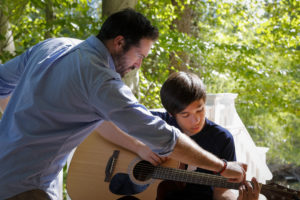One of the five main 2022–2027 Strategic Plan goals focuses on fundraising, as well as educating the school community about the essential role it plays in the success of CMS.
CMS’s financial structure operates like almost all non-profit independent schools. The school generates revenue through
- Tuition
- Non-tuition programs and fees (i.e. before and after-school care, after-school enrichment clubs, and summer camps)
- Grant awards
- Annual giving
Annual giving is also split up into two distinct measures, and one doesn’t count toward the other:
- The Annual Giving campaign, and
- The Annual Benefit event
 Through the years, having worked at three different Montessori schools located in three distinctly different locations in the United States–Hershey Montessori School in Ohio, Marin Montessori School in California, and Chesapeake Montessori School–I have heard surprise expressed over and over again about the fact that tuition revenue alone doesn’t cover a school’s annual operating budget; thus, let me attempt to pull the curtain back a little bit…
Through the years, having worked at three different Montessori schools located in three distinctly different locations in the United States–Hershey Montessori School in Ohio, Marin Montessori School in California, and Chesapeake Montessori School–I have heard surprise expressed over and over again about the fact that tuition revenue alone doesn’t cover a school’s annual operating budget; thus, let me attempt to pull the curtain back a little bit…
First and foremost, CMS is a not-for-profit foundation, meaning, we generally ascribe to the practice of generating an annual budget that assumes a zero-balance, for the most part. If we budget for, and/or end up with, a surplus, then we need to justify that surplus in our accounting practices.
Other forms of income besides tuition revenue include:
- non-tuition revenue
- annual giving
- grant awards
Beyond tuition revenue, most all other sources of revenue are less reliable. As for the least reliable source of income, grant awards, we’ve been very fortunate these last three years and have received grant awards that have sustained our community through the pandemic. Without a dedicated grant-writer on staff, this source of revenue is not something that we can rely upon to make up for any budgetary shortfall or incurred calamity from year-to-year. Grants will simply remain additive sources of revenue for the foreseeable future.
Likewise, non–tuition revenue (shuttle service, before and after-school care, etc) is somewhat reliable, but there are too many variables at play in which to guarantee this source of revenue from one year to the next.

Which brings me to the role of annual giving, the third most reliable source of income for CMS. On occasion, we are in a position to budget for a zero earnings outcome using the other three sources of revenue, which means that any amount of money donated to CMS’s annual fund or brought in by the annual benefit is designed to be used to better our programs or operations in one way or another, capture how we use the funds in the annual report, and/or save the funds for a rainy day when calamity strikes. It is rare that CMS–or any independent school for that matter–is able to cover the annual operating budget using only the other three means. Most years, we budget for a deficit, thus making annual giving necessary in order to break even. Other years, we are able to budget a small loss and fairly confidently hope that annual giving will make up the difference, plus some, which we can reinvest in the school. Still, there are years when we don’t break even and don’t raise enough donations and have to rely on reserves to float us from one year to the next.
When we don’t break even for too many years in a row, it results in self-assessment that requires one of two, or sometimes both, outcomes: 1) raise tuition rates dramatically any given year or modestly from year-to-year over the course of a few years, and/or 2) aggressively fundraise in order to keep tuition rates as low as possible and revenue sharing a viable practice for those that can give to the benefit of others in our community.
Regardless of whatever hopeful outcome the school budget assumes from year-to-year, my goal in writing this communication has been to stress how important annual giving is to the financial viability of CMS. Almost all private schools’ fundraising campaigns include 8-12 “asks” a year, 2-4 major events, phone-a-thon fundraisers, and 2-3 personal letters and phone calls from the Head of School soliciting donations to annual giving. Again, CMS’s efforts are much more modest in scale and scope, however, we are exactly the same as larger schools with regard to the important function that fundraising serves in the overall financial structure of our school.
Thank you for giving to our annual campaign. I appreciate your time given to learning more about our fundraising efforts and its importance, and I am grateful beyond words for the choice you’ve made to enroll your child(ren) at Chesapeake Montessori School.

Sincerely,
Robb Wirts
Head of School
